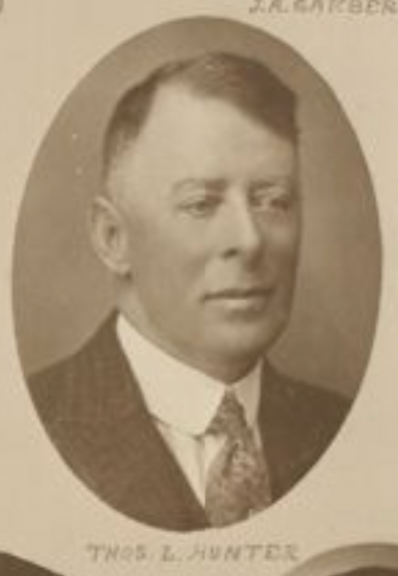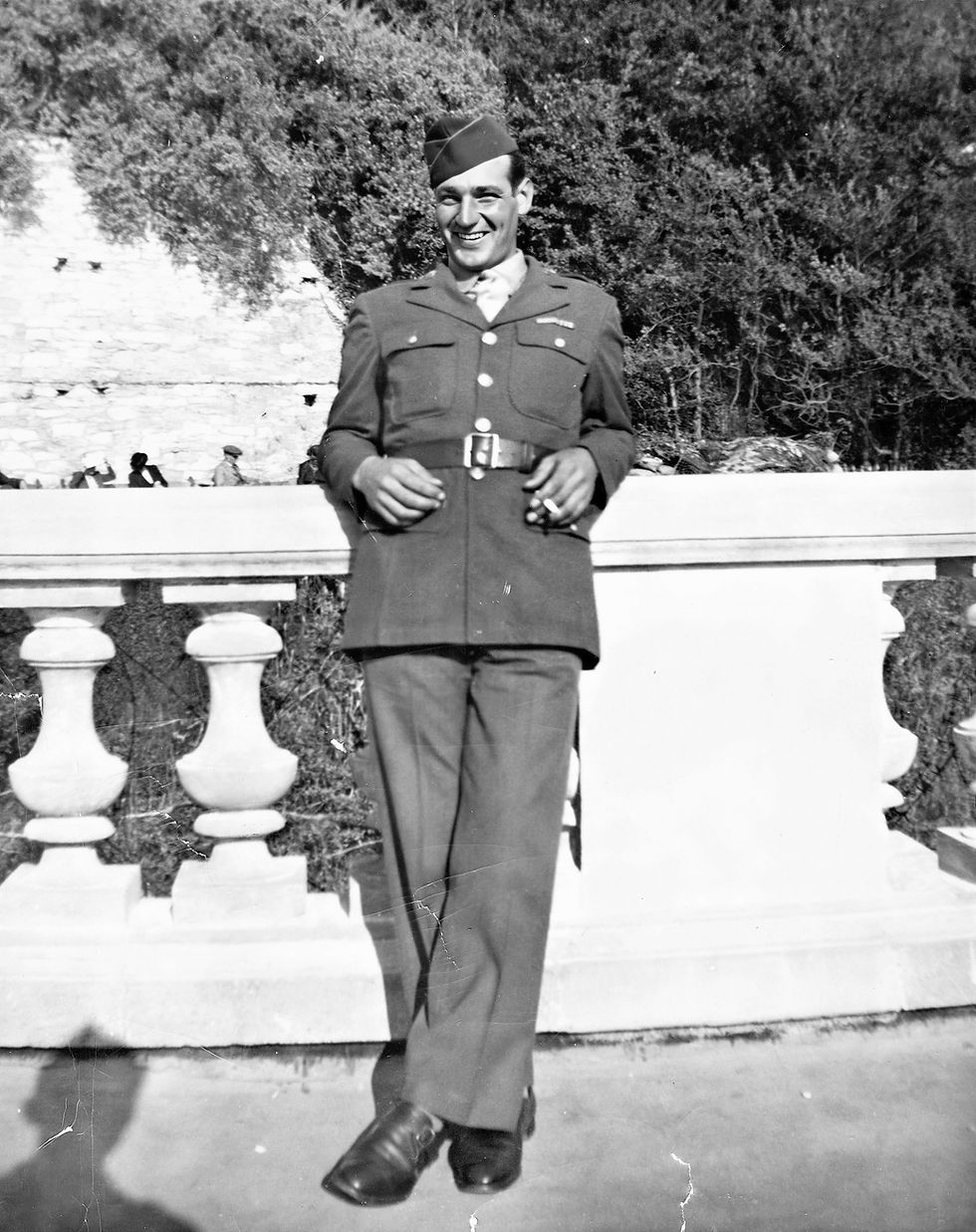William Thornton
- kghistorical1994
- Jul 20
- 6 min read
Submitted by Daniel M. Thornton III
William Thornton was the immigrant ancestor of President James Madison. President Madison was the principal author of the First Amendment to the United States Constitution that established the nation’s foundational principles of freedom of religion, freedom of speech, provisions for a free press and the right to freely assemble. William was also the ancestor of President Zachary Taylor, Meriwether Lewis, General George Patton and General George Mar- shall. And he was among a small group of early Virginia settlers recognized for their many prominent descendants—government leaders, statesmen, and military officers whose contributions to the founding of the United States are widely acclaimed.
Yet for far too long, too little has been known about him. Family tradition claims he descended from the ancient de Thornton family of East Newton, Yorkshire. But his immediate family origins have been unclear, as have the circumstances surrounding his emigration. Was he simply rounded up like so many other English boys who were caught roaming the streets? Was he perhaps spirited away and bound as an indentured servant? Or might he have been the son of gentry, freely seeking better prospects in the royal colony? And why would he leave England in the fall of 1641? What did his overseas journey en- tail, and on what ship did he sail?
And once in Virginia, what conditions would he face? What did his life look like in the impoverished colony, amid, at times, chaotic events? And how did he go from being a humble planter to acquiring 700 acres in Gloucester County and later purchasing an enormous tract in Rappahannock County? And what did his service on the Petsworth Parish vestry (until he was about 80) entail?
Answering these questions—to a fuller extent than ever has been done be- fore—is the focus of this book. William Thornton’s story is one of sacrifice, love of family, leadership, and unwavering faith. William Thornton, set amid the ear- ly history of Virginia.
Relocating to Sittingbourne
In April 1670, Anthony Savage purchased 1,000 acres in the “freshes of Rappahannock River” from John Prosser of the Golden Vale. The parcel was record ed as Mangakemoxon a “Town of Indians.” This immediate area was inhabited by Nansemond Indians that had settled immediately east of the mouth of Mill- bank Creek. [Stricklland et al, “Defining the Rappahannock Indigenous Cul- tural Landscape,” p. 33] A map drawn by Augustine Herrman in 1670 depicts the Dogue Indians living above Omen Creek and shows Mangakemoxon to the west of Gingoteague Creek, upriver from the Nanzatticos.
By the conclusion of the Third Anglo-Powhatan War in 1646, Nansemond families were forced to flee their towns along the Nansemond River, a tributary of the lower James River. Some of these Nansemonds may have relocated near other Algonquin tribes along the Rappahannock such as the Nanzatico (earlier identified as the settlement of the Nantaughtacund by Captain John Smith).
Prosser and his partner Thomas Chetwood were land speculators in the up- per parts of the Rappahannock. The tract sold to Savage was part of over 5,000 acres they had been granted in 1667 known as “Nanzem.” Savage’s land fell be- tween a 1000-acre parcel Prosser had sold to Symon Miller in April 1669 and 500 acres he sold to William Strother the following October. These parcels were usually surveyed about one mile (320 poles) inland. These plantations were located roughly 20 miles down the river from William Thornton’s 1675 gift of land to his two younger sons.
A few years earlier, in 1666, John Catlett, one of the earliest settlers of Port Royal, petitioned the House of Burgesses on behalf of his wife’s son by an earli- er marriage: "Whereas John Catlet Gentleman in the behalf of Francis Slaughter Orphan hath shewed that Francis Slaughter obtained a patent of land which is included within the bounds allotted by order of the Grand Assembly to the Nanzatico Indians, it is ordered according to the said Catlet's petition on the be- half of the said Orphan that upon the Indians deserting the said land, the Or- phan may be readmitted to enjoy and possess the same by virtue of the grant and that no other after claim may prejudice him in his rights." [McIlwaine, Journals of the House of Burgesses of Virginia, 1659/60-1693, p. 41] Francis Slaughter Jr. was the son of Elizabeth Underwood Slaughter. After the death of her husband, Elizabeth married John Catlett about 1657. John became the guardian of her son and petitioned for his land rights. Elizabeth and John had several children, including John Catlett Jr. The petition recounts that young Francis’ parcel fell within the bounds allotted to the Nanzatico Indians suggest- ing that this was land that had been specifically reserved for the Nanzaticos.

It is not specifically known when Francis and Rowland permanently relocated to Sittingbourne. Francis married Alice Savage on April 13, 1674, according to his Bible. Francis wrote that he “married ye 13 of Aperell, it being a Munday: 1674.” Alice was the daughter of Anthony Savage, a neighbor of William Thornton in Gloucester. Anthony had been a justice and sheriff of that county since 1660. [McIlwaine, Journals of the House of Burgesses of Virginia 1659/60 –1693, Vol. 2 (Richmond: Virginia State Library, 1914) 9] That the couple mar- ried over a year before the land in Sittingbourne was gifted to Francis might suggest that the couple married in Gloucester. Alice gave birth to their first child, a daughter named Elizabeth “borne ye 3th of January at 12 of ye Clock at night ye next day being Monday in 1674.” This would have been January 3, 1675, according to the modern calendar.
The years 1676 and 1677 saw war and rebellion throughout the colony. Following this disruption, in November 1678 Anthony prepared a Deed of Gift to transfer 300 acres to “my sonne in Law Francis Thornton and his wife Alice.” Francis and Alice were noted to be living in Sittingbourne at the time. The land, which was along the western side of Savage’s plantation, was for his son-in-law and daughter to enjoy during their lives. Following their deaths, the property was to revert to Francis and Alices' daughter Margaret. Margaret was born in April 1678. The following year, in April 1679, Savage secured the services of his “trusty and wellbeloved friend” Mr. Symon Miller to acknowledge the gift. Rowland Thornton witnessed the acknowledgement. [Ruth and Sam Sparacio, (Old) Rappahannock County, Virginia, Deed and Will Book Abstracts, 1678/79–1682), pp. 8–9] These two 1678 references are the first recorded entries confirming that William’s younger sons had relocated to Sittingbourne.
Margaret Thornton would marry William Strother Jr. on April 2, 1694. In 1700, William Strother Jr. inherited 150 acres on the east side of his father's land, and combined with Margaret's 300 acres, the property later became known as Millbank.
When Anthony Savage died about 1695 (no will has survived), he is believed to have passed the remaining 700 acres (the eastern side) to Francis and Alice Thornton to be given to his other granddaughter Elizabeth. Elizabeth's first marriage in May 1695 was to Edwin Conway Jr. by whom she had one son Francis. Edwin was the son of Edwin Conway Sr. and Martha Eltonhead, both of whom emigrated from England, married and settled in Northampton County. When Edwin married Elizabeth, he was residing in Lancaster County. He would die in 1698.
Elizabeth would next marry Jonathan Gibson. Gibson was from Bampton, Westmorland, England. He married Elizabeth on March 3, 1699 and they were the parents of at least 1 son and 3 daughters. He died before December 5, 1729, in King George County.
Francis Conway would marry Rebecca Catlett the daughter of John Catlett Jr. Upon the death of Jonathan Gibson, Francis Conway and Rebecca inherited these 700 acres. Francis and Rebecca would have six children. One of those children was Eleanor Rose Conway. Nelly met her future husband, James Madison Sr., when he visited Port Royal to ship his tobacco crop. In December 1750, Nel- ly returned to her mother's property pregnant with her first child. She gave birth to James Madison Jr. on March 16, 1751, in her mother’s home at Belle Grove. James Madison Jr., nicknamed “Jemmy” by friends, would be elected the fourth President of the United States in 1809. [Belle Grove Plantation Website, “History of a Southern Plantation”]
Anthony Savage became a Justice in Rappahannock County after permanent- ly relocating to the county. He would join Lt Colonel Thomas Goodrich and Ma- jor Thomas Hawkins as a lifetime member of the court. Francis Thornton would work for and eventually alongside his father-in-law as a justice. [“Tyler’s Quarterly Historical and Genealogical Magazine,” Vol 12, 1931, p. 65]
Francis and Alice would raise their children on their plantation named Holly- wood. [citation needed]
Rowland may have moved to Sittingbourne at about the same time as Francis. He would eventually marry Elizabeth Fleming, daughter of Captain Alexan- der Fleming, who had died in 1668. It is believed that Rowland named his plantation “Snowden.” [citation needed] Snowden, coincidentally, was the name of one of the farms on the Manor of Thornton-on-the-Hill in Yorkshire. [Rodgers, “Thornton-on-the-Hill,” p. 101] The name Snowden also appears on properties located in what would become Fredericksburg, adjacent to land Francis Thornton would later purchase along the falls in central Fredericksburg.




Comments